
Carl Sigismund Kunth was a German botanist. He was also known as Karl Sigismund Kunth or anglicized as Charles Sigismund Kunth. He was one of the early systematic botanists who focused on studying the plants of the Americas. Kunth's notable contributions include the publication of Nova genera et species plantarum quas in peregrinatione ad plagam aequinoctialem orbis novi collegerunt Bonpland et Humboldt. This work spanned seven volumes and was published between 1815 and 1825.

Leuenbergeria bleo, formerly Pereskia bleo, is a leafy cactus, native to the shady, moist forests of Central America, that grows to a woody, prickly shrub about 2 m tall with large, orange flowers resembling rose blossoms.
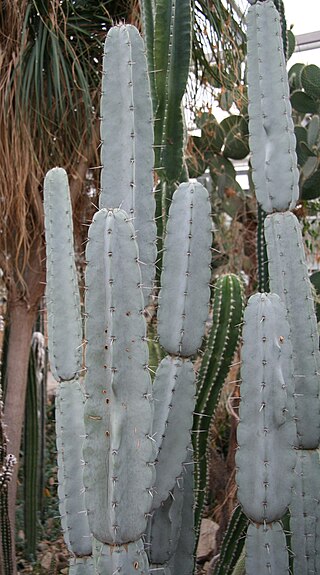
Armatocereus laetus is a species of Armatocereus from Peru.

Armatocereus matucanensis is a species of Armatocereus from Ecuador and Peru.
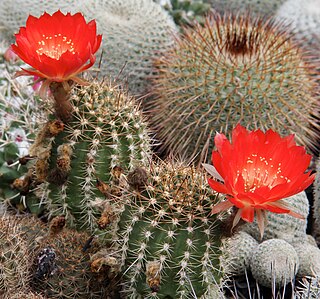
Lobivia hertrichiana, is a species of Lobivia found in Bolivia and Peru.

Lobivia schieliana, is a species of Lobivia found in Bolivia and Peru.
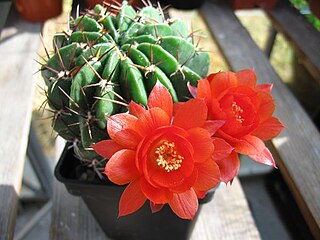
Lobivia maximiliana, is a species of Lobivia found in Bolivia and Peru.

Matucana intertexta is a species of cactus in the genus Matucana, native to Peru. It has gained the Royal Horticultural Society's Award of Garden Merit.

Neoraimondia arequipensis, synonym Neoraimondia macrostibas, is a tree-like cactus native to western Peru. It was first described in 1835 as Cereus arequipensis.

Haageocereus pseudomelanostele is a species of Haageocereus found in Peru
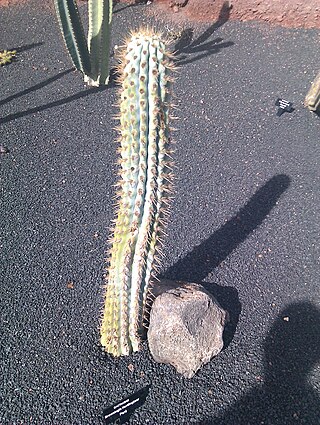
Browningia hertlingiana is a species of Browningia found in Peru.

Matucana madisoniorum is a species of Matucana found in Peru.

Matucana ritteri is a species of Matucana found in Peru.

Browningia amstutziae is a species of Browningia found in Peru.

Haageocereus versicolor is a species of Haageocereus found in Peru.
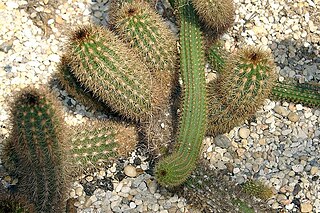
Haageocereus acranthus is a species of Haageocereus found in Peru.
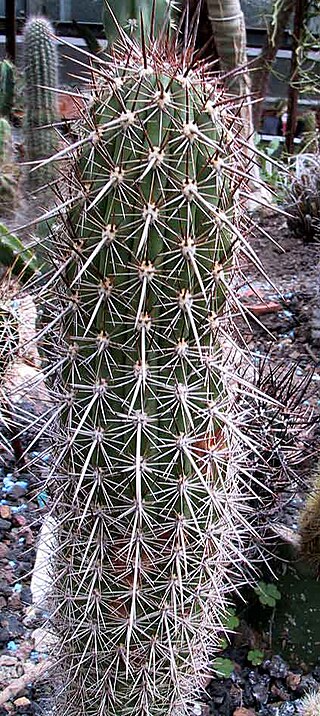
Haageocereus platinospinus is a species of Haageocereus found in Peru.
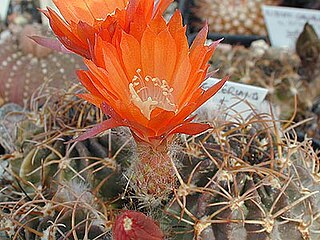
Lobivia tegeleriana is a species of Lobivia found in Peru.

Borzicactus sepium is a species of Borzicactus found in Ecuador.
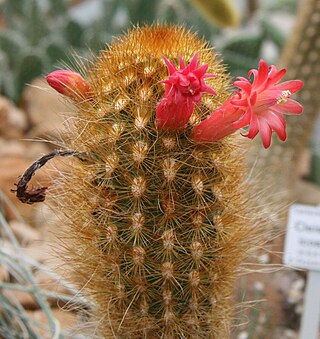
Borzicactus icosagonus is a species of cacti found in Ecuador and Peru.























